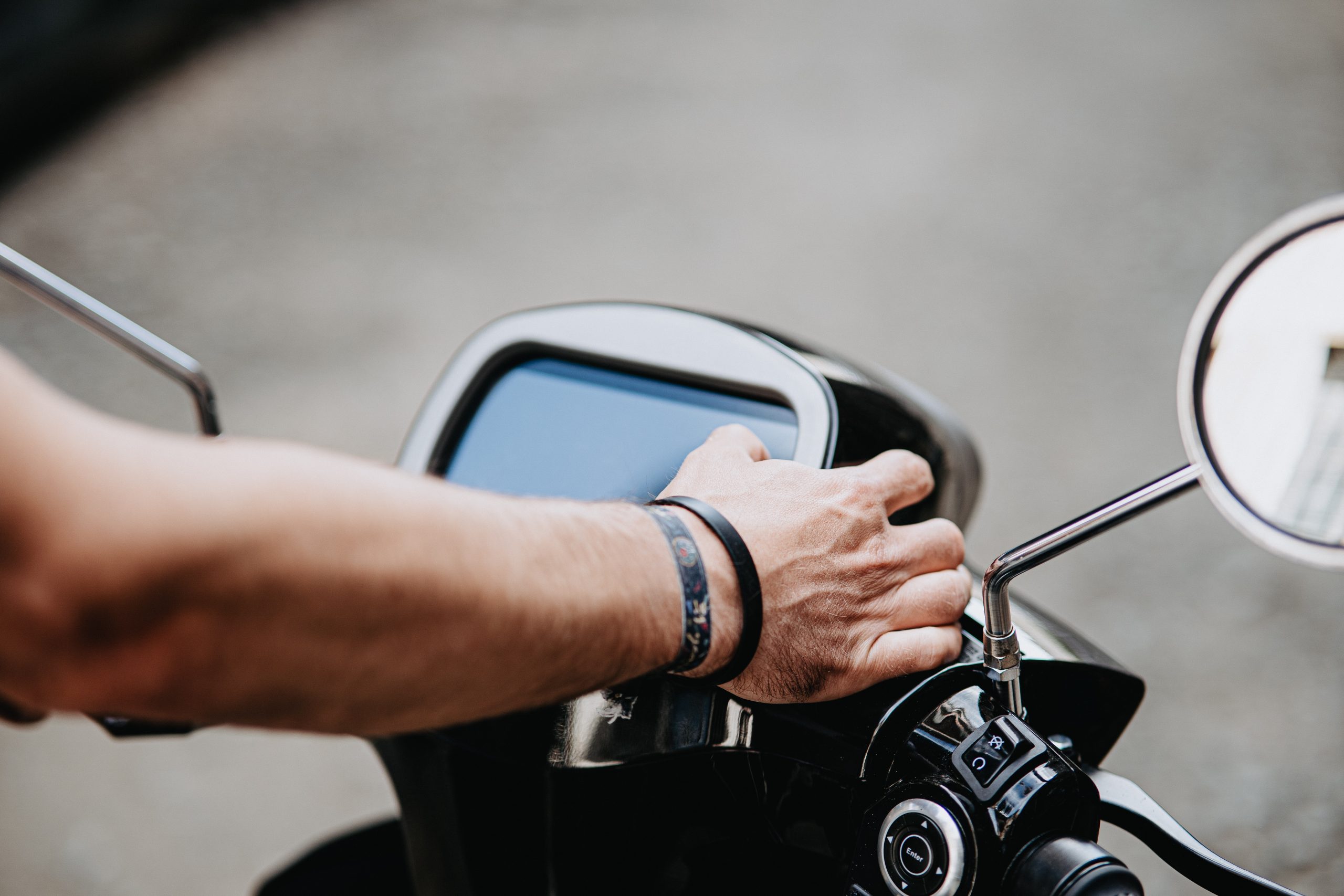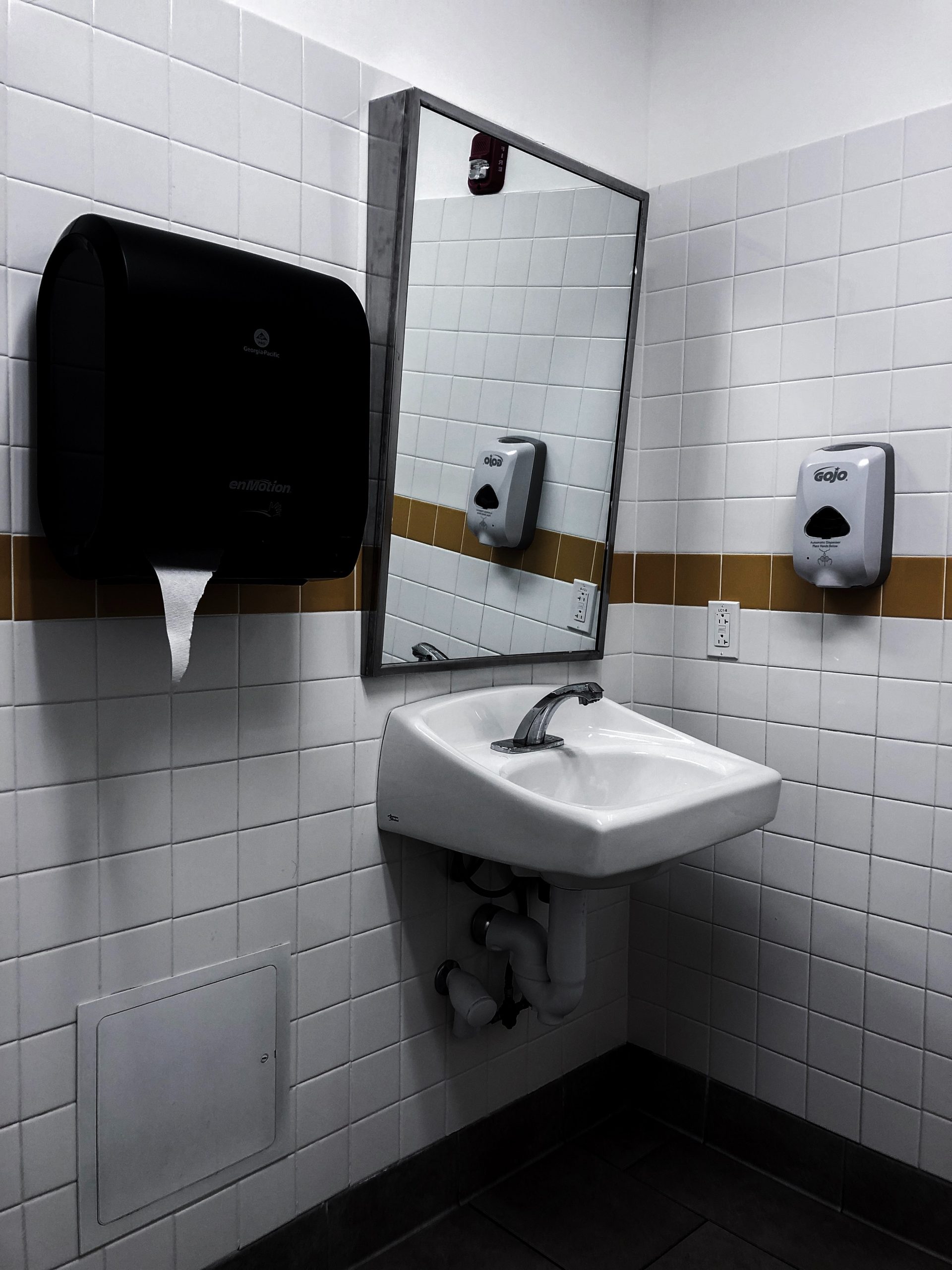Spoiler alert: the consequences are not pretty. This calming (Australian?) voice and wonderful orchestral soundtrack in this December 2022 video belie the serious and gross subject: how much germs and fecal matter shoot out of a toilet when you flush it. The University of Colorado Boulder researchers who produced the video found that airborne particles ejected from the toilet traveled at speeds of up to 6.6 feet per second (that’s a very fast walk at 4.5 miles per hour) and reached 4.9 feet above the toilet and smaller particles measuring less than 5 microns hung in the air for more than a minute.
It’s not a new subject (the subject was first revealed in a 1975 study, and another 2013 study warned about the toilet plume) but the video using UV light brings it to the forefront of our minds and hopefully, engages us in healthier bathroom habits such as closing the lid and sanitizing surfaces more frequently in our own private bathrooms.
So what should we do?
Ever since Febreeze informed us that odor can be caused by bacteria, bathroom odors are particularly noxious, as we know that the substances that cause it definitely have dangerous bacteria. There are different ways of removing/preventing bathroom odor (and thus bacteria). In light of the knowledge of toilet plumes, toilet sprays like PooPourri, although emitting a pleasant odor, seem to be one of the least effective because while spraying on the bowl creates a scented vapor, it does not prevent the emission of bacteria and particulates into the atmosphere. Other products on the market that have been invented to remove toilet odors at the source, using hardware to pull vapors from the bowl area. These include:
- Potty Sniffer Toilet Odor Ventilation System ($271 and up): fan directs air from bowl into a nearby vent. This is the preferred place to direct these gasses. However, installation is a bit more complicated as connecting to a vent may require to drill into drywall or cabinets, which needs work to conceal.
- JonEvac Toilet Seat Ventilation System ($300): Replaces your toilet seat with a special seat that has ventilation channels on the underside. Fan needs to be plugged into a regular wall outlet and activated carbon filter ($80) needs to be replaced every 1-2 years.
- Splashblocker was invented primarily for hospital settings. It is a portable “shield” to protect healthcare workers from disease and hazardous drugs (like chemotherapy) that are excreted in patients’ waste, which are aerosolized whenever the toilet is flushed. Previous to this invention, caregivers often placed plastic-backed absorbent pads (such as are used in keeping beds dry from incontinence) over the toilet before flushing, but the cost of these adds up and can easily be sucked down the toilet, creating big plumbing issues.
- According to this 2020 study, a redesigned toilet seat that can spray a “liquid curtain” of water or sanitizing solution over the bowl when you flush can effectively impede upward movement of particulates, and only 1% of (bacteria/virus-laden) aerosols enter the air above the toilet seat.
The forceful flushing of vacuum-assisted flush toilets, which are commonly used in public restrooms (and all airplanes), actually do a great job of eliminating the toilet plume. This video uses blacklight just like the study at the beginning of the article, and the difference between regular toilets and this vacuum system seem to be huge. There were no particles coming out of the vacuum-assisted toilet, but many coming out of the regular flush toilet. Vacuum-assist toilets still use water to help flush, but nowhere near the amount of regular gravity systems. This fact comes from the AcornVac website (a manufacturer/supplier of vacuum toilet systems): “a 500 person commercial office building that is serviced by a single vacuum center and 1/2 gallon per flush vacuum toilets will save over 265,000 gallons per year, compared to conventional low flush toilets.” Water savings aside, I think that the absence of a toilet plume when using a vacuum toilet is their greatest benefit, and it makes me feel a whole lot better about using the bathroom on airplanes!
What happens when the lid is lowered?
Since vacuum-assist toilets and shields are not commonly installed in residences, most people have only a lid to guard against the toilet plume. What happens when you put the lid down and flush? Obviously, there are particulates and germs landing on the inside of the lid. (This is an area that gets skipped over when cleaning, I’m sure!) The rest of the particulates exit through the spaces between the toilet, seat and lid. Here are the good and bad results of flushing with the lid down, assessed by researchers at University College Cork:
- Reduced the number of both visible and smaller droplets during and after flushing by 30-60%
- increased the diameter and concentration of the bacteria in these droplets.
- airborne microdroplets were detected for 16 minutes after flushing the toilet with the lid down, 11 minutes longer than when the toilet was flushed with the lid up.
- Another study concluded that lowering the lid before flushing “reduced 48% of total number concentration, 76% of total surface area concentration, and 66% of total mass concentration, respectively.”
Using the lid when flushing definitely helps, however some aerosols are still shooting out, and hanging around even longer. What are the other things we can do to protect from THE PLUME?
- If you are in a public place and concerned about transmission of disease, put on an appropriate mask before going into the restroom–at least the aerosols should be filtered out of your air, and germs will not land on your nose or mouth. As always, wash your hands thoroughly, and don’t touch your mask or face!
- If you’re at home, it goes without saying to clean regularly.
- Use a non-toxic disinfectant on all surfaces in the bathroom. Check out our article on the differences and methods of cleaning, sanitizing and disinfecting.
- Change hand towels frequently, at least twice per week. For towels and clothing that have been exposed to toilet plume, you can add Borax to your laundry, or pre-soak with it, as it turns into hydrogen peroxide when hot water is added to it. It’s also generally safe for colored clothes.
- Use a HypoAir bipolar ionizer like Germ Defender or Upgraded Air Angel Mobile to sanitize the air and surfaces in your bathroom 24/7!
- Leaving your toothbrush in an open place on the bathroom counter sounds icky (for obvious reasons), but stashing it away in a plastic container or drawer is not advised either. According to a meta-study published in 2012, toothbrushes stored in aerated conditions had a lower number of bacteria than those stored in plastic and bacterial growth on the toothbrush increased 70% in a moist, covered environment. What should we do with our toothbrushes? Sanitize your toothbrush regularly by soaking it in hydrogen peroxide, Listerine, or using an approved UV sanitization device (but not in the microwave). (Is your toothbrush covered in poop? Here's how to thoroughly clean it)
- It’s best to switch on your bathroom exhaust fan before every flush, and leave it running for at least 15-20 minutes afterwards. If your exhaust fan does not seem to remove odor very quickly, then you know it’s not removing the “toilet plume” aerosols. It may be under-sized, or just old and inefficient. Because the bathroom exhaust fan is also a very important appliance to remove humidity (and thus prevent mold), check out our article on how to check its size and where it should be vented!
Sorry, I know after seeing that first video, I couldn’t “un-see” it, but I’m grateful that non-toxic cleaners and laundry methods have been invented. We just need to somehow lower the cost of vacuum-assisted toilets, and bathrooms will get a lot cleaner!



